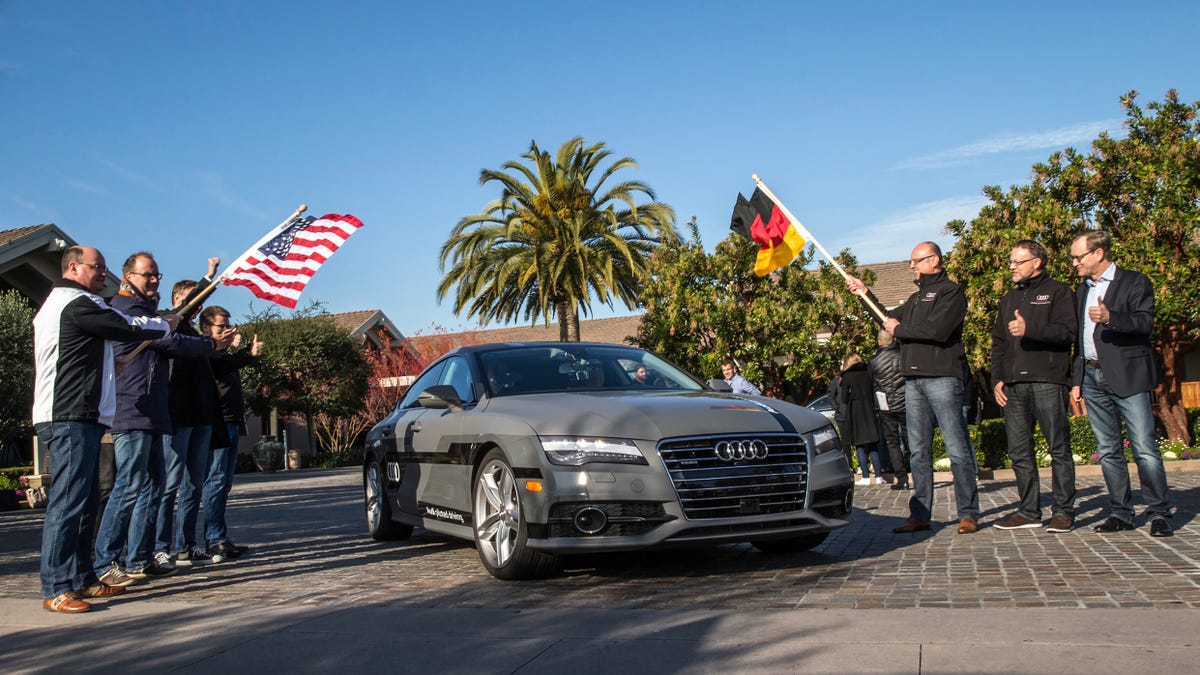Audi's 550-mile self-driving gamble
Audi takes its self-driving A7 development car on a 550-mile trip from the San Francisco Bay Area to CES 2015 in Las Vegas.

During a ride in Audi's self-driving car along a freeway in Las Vegas at last year's CES, the system failed and the driver had to take over. After a year of development, Audi must feel it solved all the glitches, as it sends an A7 fitted with its self-driving gear on a two-day, 550-mile road trip from the San Francisco Bay Area to Las Vegas, and the 2015 International CES.
Audi calls its self-driving technology "Piloted Driving," and it has been showing significant advancement with the technology year after year. Now Audi notes that the sensors in the research car, nicknamed Jack, are "production-ready."
This A7 comes with Audi's standard long-range forward radar, currently used for adaptive cruise control, but also features two rear-facing and two side-facing radar sensors. A laser scanner, or LIDAR, behind the grille serves as a redundant sensor to help the radar with solid-object detection. A 3D camera also looks forward, while four smaller cameras monitor the front and rear views from the corners of the car.
The information from all these sensors and the car's GPS location get processed by an onboard computer, which can control braking, acceleration and steering.
Audi notes that the system will work from 0 to 70 mph, but when the car approaches an urban area it will alert the driver to take over manual control. If the driver does not take over within a set amount of time, the car will turn on its flashers and pull over onto the shoulder. While under way on the highway, the A7 can initiate its own lane changes and passes.
One challenge for the A7's Piloted Driving road trip will be the condition of lane lines, which the car will monitor to help guide its path. If lane lines disappear due to road construction or weathering, the car will need to rely on its GPS and relative distance from other traffic around.
The urban environment limitation also suggests that Audi has not refined the system enough for the many obstacles and threats of city driving. However, the system Audi described, if it works as intended, could be a feature available on production cars within a very few years, helping drivers make long freeway trips.
To follow the A7's progress to CES 2015, check out @Audi and the hashtag #DrivingNotDriving on Twitter.

